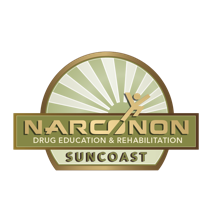CDC Reports Drop in Painkiller Prescriptions

It’s easy to look at the current opiate epidemic and feel depressed. Depressed because it seems as if no matter what we do, the problem continues to get worse. Heroin and Fentanyl addiction climbs to an all-time high, overdoses are soaring and families across the nation are now finding out what it feels like to bury their child.
It’s also easy to lose sight of where the problem came from in the first place. This epic problem society faces started with the over-prescription of painkillers. Painkillers were carelessly doled out and given to people with no regard to the possibility of what might happen if all these people became addicted to them. Then, as a money-making scheme, so-called “pill mills” popped up in various parts of the country and prescribed mass quantities of opiates to virtually anyone who came through their doors. If you had an MRI or an outdated X-ray and a fistful of cash, you got your drugs. Now, for the first time since all this craziness began, there has finally been a drop in a number of painkillers being prescribed in a single year, which shows that we might finally be moving in the right direction.
Recently, the Centers for Disease Control and Prevention released its most current data on opiate prescriptions. For the first time since the problem began, prescriptions for opiates has dropped in 2015. Even though the reports did show a drop, a number of prescriptions written in 2015 were still three times more than the amount written in 1999, but there is still progress there. Dr. Deborah Dowell, senior medical adviser at the CDC’s Division of Unintentional Injury Prevention said, "We are starting to see progress on the prescribing side of the issue, but there is still an enormous way to go."
The only unfortunate side to seeing a drop in a number of painkillers being prescribed is the fact that many more addicted individuals will inevitably turn to heroin. This is one of the ways the whole epidemic got started in the first place. People were over-prescribed painkillers, got addicted to them, and after the withdrawals got too uncomfortable, they found their way to heroin as a solution. While prescriptions for opiates decreased in 2015, deaths from heroin and fentanyl soared to 19,884.
Dr. Deborah Dowell also said, "There is a lot of people who have already been exposed to opioids. We need to help those people and get them effective treatment for opioid use disorder and at the same time, we need to prevent more people from being unnecessarily prescribed in the first place."
That’s the good that will come from the reduction of opiate prescriptions; preventing people from being introduced to and started on opiates in the first place. If we can keep people from being needlessly exposed to painkillers, we will inevitably keep people from getting onto heroin and fentanyl as well. The idea here is prevention.
Of course, drug rehabilitation is the best solution once an addiction has been formed but being able to prevent people from getting addicted in the first place is the optimal solution. If you know someone who needs treatment for opioid abuse, please contact Narconon Suncoast at 877-850-7355 today.
